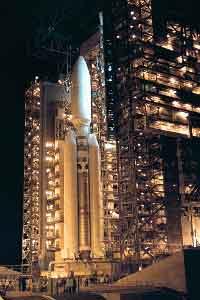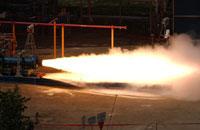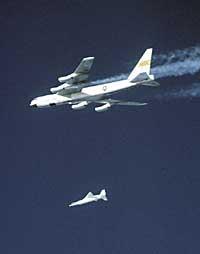Nuclear Energy in Space Exploration
2001/04/09 Galarraga Aiestaran, Ana - Elhuyar Zientzia
Studying the outside of the Solar System is not an easy task. Although the moon of Jupiter is very attractive in Titan of Europe and Saturn, it is difficult to reach it. On the one hand, these planets are far away and, on the other, much energy is needed for a spacecraft to orbit around the small satellites of these so large planets. For this reason, this type of explorations are very expensive and the projects are abandoned.

NASA has launched a controversial proposal to solve rockets using nuclear energy. Some believe it is impossible to attend distant planets without nuclear power propulsion. The small amount of plutonium that NASA used in 1989 to send Galileo to Jupiter caused the rejection of many people. The same happened in 1997 with Cassini, who was sent to Saturn, so they later ruled out the use of nuclear energy.
The rockets obtain the driving force by passing the high-pressure gas through a nozzle, thus accelerating the spacecraft in the opposite direction. For example, the engines of the ferries obtain high pressure gas by mixing liquid oxygen and hydrogen. To transform liquid hydrogen into high-pressure hydrogen gas, the thermal nuclear rocket can use the heat produced by a small reactor. To achieve the same driving force, the nuclear rocket needs less fuel.
For this reason, NASA researchers propose to re-use nuclear energy. They say that a 500-kilo spacecraft sent with nuclear power would arrive in Pluto four years earlier than with conventional rockets, that is, it would only need "six and a half years." Several groups of researchers are already testing nuclear energy rockets and NASA plans to send a spacecraft to Pluto in a few years. The debate on the use of nuclear energy is also underway.

Gai honi buruzko eduki gehiago
Elhuyarrek garatutako teknologia





